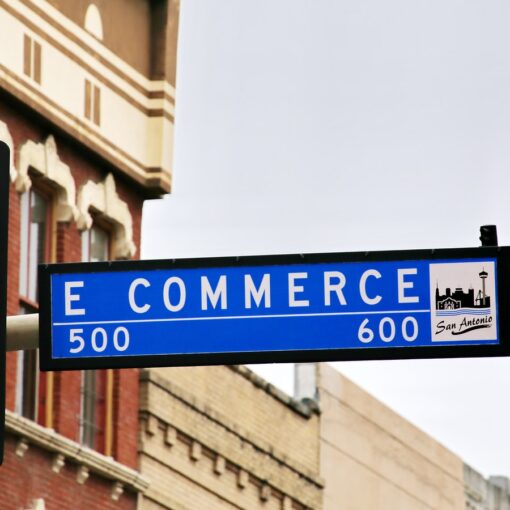Key Concepts and Takeaways
– Optimize website for speed and mobile responsiveness.
– Use high-quality images and detailed product descriptions.
– Implement clear calls-to-action (CTAs) on every page.
– Simplify the checkout process to reduce cart abandonment.
– Offer multiple payment options to accommodate preferences.
– Utilize social proof, like reviews and testimonials, to build trust.
– Create urgency with limited-time offers or discounts.
– Personalize user experience through targeted recommendations.
– Engage visitors with live chat support for immediate assistance.
– Analyze customer behavior data to refine marketing strategies.

In the bustling bazaar of e-commerce, turning curious website visitors into loyal buyers is like trying to catch a butterfly with bare hands—delicate and often elusive. Every click on your site is a potential sale, yet many slip away like sand through your fingers. The secret? Employing savvy strategies that not only attract attention but also create an irresistible urge to buy. It’s time to transform your website from a mere showcase into a vibrant marketplace where conversion rates soar higher than your hopes for winning the lottery.
But don’t fret! With the right mix of psychology, design finesse, and strategic nudges, you can guide those hesitant shoppers toward the checkout button faster than they can say “add to cart.” From compelling product descriptions to seamless user experiences, we’re diving into proven tactics that will help you capture those fleeting interests and turn browsers into buyers who keep coming back for more!
There are many precise steps that can be taken to convert website visitors into buyers. Besides using correct communication tactics, implementing e-commerce strategies will help with conversion rates.
E-commerce strategies include adding new products to competitor sites, sending automated emails to customers on their birthdays, and providing shipping discounts for purchases over $100. Many people believe the prime goal of e-commerce is just to move product online, but this couldn’t be farther from the truth.
E-commerce is a profitable industry in which to invest. Websites get thousands of visitors daily who are looking for that perfect product or service, but converting these website visitors into buyers can be difficult. If your company is considering expanding into e-commerce, it pays to study the best practices before diving in head first. The following are four strategies that will help ensure your company’s success in the e-commerce market.
If your company is struggling with conversions, it could potentially be due to the lack of an e-commerce strategy. One way to increase conversions is by building a conversion funnel. The first step in this process is to create an offer that entices consumers. The next step is to make sure that the user can easily find the offer on your site, and then purchase it.
Understandably, every firm is unique, and what defines success for one company may be quite different from what makes success for another. However, there are certain generally beneficial things you can do to increase your chances of converting site visitors into customers.
Top suggestions for increasing the number of sales conversions on your website
1 – Have you recently experimented with your own website?
Inquire with your consumers.
Make a few phone calls to potential consumers. Yes, call them up (no email surveys please) and ask them how they are finding utilizing your website, flaws and all. In the process, you’ll learn a great deal about people’s opinions on a variety of topics, not simply the website’s functionality.
Is your website too difficult to use?
This is one of the most common causes of sales conversions that are on the decline. Is there an excessive number of links? Is there an excessive amount of work to be done at once? When it comes to online body text, less is more in most cases – utilize headers, brief paragraphs, and bullet points. If you want more product or service information, create separate pages for it.
Also, pay attention to color selections – utilize complementing colors that are easy to get along with while entertaining guests. A relaxed visitor is one that stays for a longer period of time, views more pages, and makes a purchase.
Is it simple to go around your website?
When it comes to physically navigating through a website, I’m a bit of a geek, despite the fact that I work in the search engine consultant industry. This is referred to as the web user experience. First and foremost, is the site quick to load – if your pages take more than 10 seconds to load, I’m out of here!
Is the website navigation where you anticipate it to be (at the top and on the left), is it clear, and is it simple to navigate? How well does the navigation take you where you want to go – and, for huge sites, is there a clear AND accurate search feature towards the top of the page?
Not to mention, be sure to test your site on a variety of browsers and screen resolutions – many still don’t work properly.
What do you want people to do when they arrive?
Remember that people don’t appreciate having to browse down lengthy pages to discover what they were looking for when they utilized a search engine or clicked through from another site to get to their desired destination.
Make your ‘bread and butter’ call to action prominently displayed towards the top of the page. And make it very obvious what you want them to do – whether it’s clicking a button (“download brochure”) or filling out a brief form (“start your free trial”).
2 – Make it very apparent why you are superior or different.
Inform them as to why they should purchase from you!
I know that’s not very British, but people are actively searching to purchase items and services online. Don’t be embarrassed about it. Many people are in the market to purchase anything and have little patience. As a result, make it very clear why a visitor should purchase from you and no one else.
You should also make it very apparent why you are superior to or different from your competition. You only have a few seconds to capture a person’s attention, so make your online headlines and subheadings stand out with compelling offers.
3 – Are you addressing your audience in the proper manner?
Remember that you must communicate with guests in their native language if you want to establish a more personal connection with them and demonstrate that you understand their demands.
Keep the use of formal language, jargon, and too salesy material to a bare minimum. Use a conversational tone and plain language to automatically establish connection and trust with your audience. This brings me to the next point…
Are you providing visitors with enough reasons to put their confidence in you?
Those purchase from people in whom they have faith. When it comes to building trust on the internet, more is better. Positive customer feedback shouldn’t be relegated to a single page on your website; instead, use testimonials throughout the sales process to strengthen your credibility.
Are your accreditations and accolades prominently displayed on your website? Are your privacy policies, terms and conditions, and other terms and conditions clear and simple to find? Make sure that safe shopping icons are prominently displayed on e-retailers’ and e-commerce sites’ websites.
Web forms and shopping carts should be given particular consideration.
Keep online registration procedures as brief as possible.
In my conversations with numerous firms, I’ve learned that many have significant abandonment rates for their online forms and shopping carts. On a regular basis, I observe non-completion rates as high as 75%! This is mostly due to the excessive number of lengthy, unclear, and poorly designed forms. Alternatively, forms that simply do not function reliably as a result of a lack of testing!
Don’t get me wrong: I’m a marketer at heart, and I like a well-organized database of information. However, you should consider if having your clients’ fax number will really benefit your bottom line. Consequently, make online registration procedures as quick and as painless as feasible.
For lead generation, all you actually need is a name, an email address, and potentially a phone number – plus the name of the firm if you’re marketing to business people.
In particular, while developing shopping carts, it is important to break the process down into logical tiny phases and to rigorously test each step. After that, to ensure that any residual gremlins are eliminated, ask some loyal customers, colleagues, and friends to test and provide feedback.
Oh, and don’t make every single field required – if someone is unable to complete a field, they will leave soon, resulting in a missed transaction.
By providing assistance, you can keep visitors engaged in the game.
Every online form or shopping cart should have a link to a feedback form, allowing visitors to provide feedback on why they were unable to complete a transaction with you. Fixing these problems will have a significant impact on your sales and on the satisfaction of your consumers.
Keep in mind that not everyone will wish to make use of your shopping cart.
Despite the fact that many consumers are content to fill out online forms, there are still plenty who would like to ask questions and chat with a live person instead. Don’t make it simple for a dissatisfied consumer to find a replacement.
Make your contact information or customer care number readily apparent to a larger audience in order to get their attention. Create and maintain a frequently asked questions page to assist site users who come to the site after hours.
4- SEO (search engine optimization) that improves conversion rates
Make use of META tags that can assist you in selling.
Meta tags are generally used to assist search engines in rapidly identifying the subject matter of a web page. And that content is often featured in the search engine results page as well. There is a risk of overcrowding them with too many keywords, which may be detrimental.
In your meta tags (title and description), you should include keywords, but you should also try to write the title and description tags so that they work together as a compelling reason for people to visit your site.
Is every web page able to stand on its own two feet?
You must remember that individual web pages, rather than whole websites, are listed on search engines and linked to from other websites while searching the web. This is an important difference that is often missed. What is the point of telling you this?
Because every page on your website must be able to stand on its own, and even sell itself, on its own merits. You should treat every page as if it were a landing page, rather than relying on your homepage to serve as your only and exclusive shopfront.
To be honest, you’ll be fortunate if more than 40% of site visitors even make it to your homepage these days. Consequently, consider each page as a standalone entity, optimize its content so that it can be discovered for certain searches, and include clear calls to action that generate inquiries and purchases on each page.
What happens if a visitor clicks on a broken link on your website?
Consider the following scenario: someone copies and pastes a link to your site that is incorrectly formatted, or mistypes your link from a marketing piece. What would they see on your site?
A 404 error page – often known as a server error page – is still shown on many websites, which amazes me. It lacks any of your logo, navigation, or anything else that would indicate that they were attempting to get to your site in the first place.
This is a possible sales opportunity that may have been lost – and it’s simple to correct. Create a personalized 404 error page for your website in a matter of minutes. Make sure to offer a useful explanation as to why the problem may have happened in your report. In addition, give important links and contact information.
Do you make use of alternative text while creating graphic files?
If you are using graphic files, be sure to include alt text for them, especially for important calls to action, so that users with impairments (or individuals who have pictures turned off in their browsers) can still view and interact with them.
As we wrap up our exploration of e-commerce strategies, remember that converting visitors into buyers isn’t just about flashy ads or discounts; it’s about creating an experience that resonates with them. By understanding their needs and behaviors, you can craft a shopping journey as smooth as butter on warm toast. After all, every visitor has the potential to become a repeat customer if you play your cards right.
So dust off those marketing tools and get ready to implement these strategies! With dedication and creativity, you’ll not only boost your conversion rates but also foster lasting relationships with customers who feel valued and understood. Happy selling!

Kevin Collier is a seasoned writer and technology enthusiast with a passion for exploring the latest industry trends. With a background in digital marketing and content creation, he brings insightful perspectives to imhits.com on emerging technologies, innovations, and their impact on everyday life. When he’s not writing, Kevin enjoys experimenting with new gadgets and sharing his knowledge with fellow tech aficionados.





